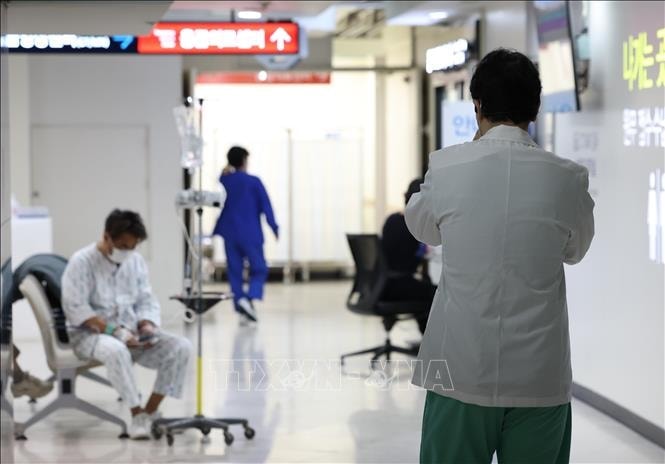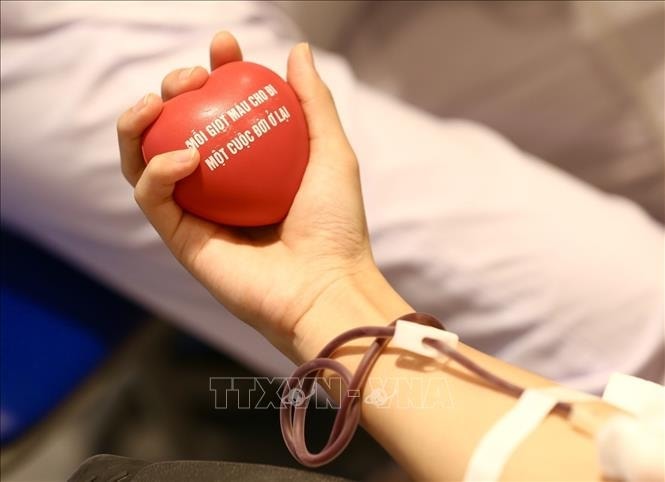Scientists in countries from Britain to Japan are conducting clinical trials of man-made blood substitutes to prevent deaths from anemia.

Research by the World Health Organization (WHO) shows that millions of people worldwide die each year due to insufficient blood supply.
Lab-grown blood was transfused into humans in its first clinical trial in 2022, specifically in patients with rare blood types. Scientists are also working to develop synthetic blood to aid in emergency care, surgery, and transfusions.
So how far are scientists currently in developing artificial blood?
What is artificial blood?
Artificial blood is a term that includes both laboratory-made blood and synthetic blood. Synthetic blood, which is still in the research stage, is a substitute that is made entirely by humans and contains no human cells.
The artificial blood mimics the function of blood cells by transporting oxygen. It is designed primarily for use in emergency or military medicine, where immediate oxygen is needed but matching blood types are difficult to find.
For example, the US military has invested $46 million to develop ErythroMer, a synthetic blood substitute designed to be compatible and stable without refrigeration. The product is still undergoing research and testing to determine its safety and effectiveness.
Lab-grown blood is based on growing human red blood cells in a controlled environment outside the body. The process begins with stem cells, which are specialized cells that can develop into different types of cells in the body. These include red blood cells, platelets (which help blood clot), or even skin cells, depending on where the stem cells are found and how they are stimulated.
Scientists use a specific type of cell called a hematopoietic stem cell, which produces all types of blood cells, including white blood cells, red blood cells, and platelets. They are found in bone marrow or in the blood of a donor. To turn these stem cells into red blood cells, they are placed in a laboratory environment and exposed to growth factors, which are natural substances that help cells grow.
Over several weeks, the stem cells gradually transformed into mature red blood cells and behaved like natural red blood cells. Professor Cedric Ghevaert at the University of Cambridge (UK) explained that scientists can “genetically edit” stem cells to boost blood production and remove blood type markers. This allows them to create blood that can be transfused to anyone, without having to match it to specific blood types.
Once available, lab-grown blood cells could help treat some medical conditions more effectively.
What milestones have scientists reached in creating artificial blood?

Lab-grown or synthetic blood products are currently in the research and development stage. In 2022, a clinical trial in the UK marked a milestone by infusing lab-grown red blood cells into volunteers to assess their safety and longevity.
Much more testing will be needed before the product can be medically approved for commercial use. Additionally, producing artificial blood in a lab is currently much more expensive than using donated blood.
In 2013, the Defense Advanced Research Projects Agency (DARPA) reported that the chemical materials needed to produce a single unit of artificial blood in a laboratory cost more than $90,000. Advances in manufacturing methods have now reduced that cost to less than $5,000 per unit. By comparison, U.S. hospitals paid an average of $215 per unit of donated red blood cells in 2019.
A preliminary study in Japan in 2022 tested hemoglobin bags — tiny artificial blood components designed to carry oxygen in the same way red blood cells do — to see if they could be a safe and effective alternative to regular blood transfusions.
The study involved 12 healthy male volunteers between the ages of 20 and 50, divided into three groups. Each group received a single intravenous injection of increasing amounts of hemoglobin bags: 10 ml, 50 ml, and 100 ml. Some participants experienced mild side effects, such as fever and rash, but these quickly resolved. There were no significant changes in vital signs, including blood pressure.
Experts say artificial blood could help reduce global blood shortages, especially in low- and middle-income countries. According to the WHO, there are about 118.5 million blood donations worldwide, with 40% of them concentrated in high-income countries, which account for only 16% of the world's population. Severe blood shortages persist, especially in sub-Saharan Africa, South Asia and Oceania, where death rates from bleeding are significantly higher than in wealthier countries.
Rural areas in low- and middle-income countries are hardest hit, creating “blood deserts” where more than 75% of patients needing blood transfusions do not have access to it. However, these shortages are largely due to storage and access issues. For example, because blood banks are often hours away, doctors in these areas are forced to delay or cancel surgeries.
Professor Ghevaert said one of the main advantages of lab-made blood is also its value in crisis situations, such as pandemics, wars or natural disasters when demand spikes.